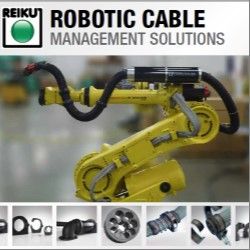Makeblock mBot: Introducing kids to robotics and programming
By Hitesh Raj Bhagat, ET Bureau: This cute little fella is the mBot — a do-it-yourself educational robot kit from robotics experts Makeblock. Built around the Arduino open-source platform, it's designed to induct kids into the fields of robotics and programming. The company chose to build around the concept of STEM education: science, technology, engineering & mathematics. Specifically, it helps children get an early start into these disciplines. There are two versions of the mBot: a Bluetooth version for home use 2.4Ghz WiFi version, which is designed for classroom use.
The company took to Kickstarter to generate funds for mBot and promised one unit for $49 (plus shipping). From a modest $20,000 goal, a staggering $285,463 was raised during the campaign. Now, you can buy a kit from Makeblock's website. Coming back to the mBot, everything that you need to build it is in the box — in a nutshell, you need to assemble it using the precise instructions provided and add batteries. There are 45 pieces and it's easy to put them together in about 15 minutes. It's neatly packaged and consists of very high quality materials — including some attractive anodised aluminium parts in your choice of pink or blue. Every little part that you need — from the main Arduino board, DC motors, to each screw, cable and even a set of tools — is in the box. It comes pre-programmed but it's also designed to be tinkered with. Parent of pre-teens might be familiar with Scratch — a free, graphicalbased programming language developed by MIT Media Lab. Well, Makeblock has built their own version for this and called it mBlock (it's based on Scratch 2.0 and free to download from their website). The idea behind mBlock is that younger children can start out with graphical programming and move on to text-based programming as they become more advanced. Cont'd...
Records 1 to 1 of 1
Featured Product

REIKU's Cable Saver™ - The Most Versatile Modular Robotic Cable Management Solution
REIKU's Cable Saver™ Solution eliminates downtime, loss of revenue, expensive cable and hose replacement costs, maintenance labor costs. It's available in three sizes 36, 52 and 70 mm.
All of the robots cables and hoses are protected when routed through the Cable Saver™ corrugated tubing.The Cable Saver™ uses a spring retraction system housed inside the Energy Tube™ to keep this service loop out of harms way in safe location at the rear of the Robot when not required. The Cable Saver™ is a COMPLETE solution for any make or model of robot. It installs quickly-on either side of the robot and has been tested to resist over 15 million repetitive cycles.
REIKU is committed to providing the most modular, effective options for ensuring your robotic components operate without downtime due to cable management.
www.CableSaver.com

